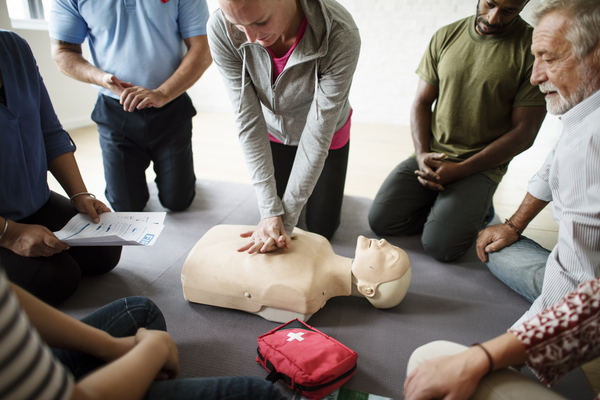Not all training meets provincial standards, fines for cutting corners can be significant

If you own or manage a workplace in Canada, first aid isn’t an option for you; it’s the law. Most business know this but few understand exactly what they need to do to satisfy their requirements.
Many companies offer first aid training in Canada but not all deliver the training in a way that satisfies the requirements of the law. Should something happen in your workplace and an auditor learns that your business received training that fell short of the provincial standards, you could be hit with severe monetary penalties.
When it comes to first aid training for your business, it really is a “buyer beware” scenario. Simply paying a fee for your training doesn’t guarantee that you’ll get your money’s worth. Here are six questions to ask before selecting an organization to train you or your employees.
Is the organization an approved trainer in your province?
While a listing by your provincial governing body is no guarantee that you will receive quality training from the organization, it does act as the first line of defence against low-quality trainers. Should your organization be audited, receiving training from a provincially-approved organization will result in less hassle and easier validation.
Does the first aid provider provide their training in accordance with the provincial standards?
By law, first aid training courses must be delivered to the client in a way that meets, at minimum, the requirements as set out by the provincial authority. Such requirements may dictate course timing, content, class size, materials used and delivery methods. For example, in Ontario, the timing requirement for certification in emergency or standard first aid must be 6.5 hours for emergency first aid, excluding breaks and lunch, and 13 hours for standard first aid, excluding breaks and lunch.
While it can seem tempting to try to circumvent these minimums in order to get employees back into the office, the fines for cutting corners can be significant — it just isn’t worth the risk. When considering a company, be sure to ask how many hours they plan to spend with their class. Any answer less than the required number of hours should send up a red flag.
What resources and certificates are left with the students after completion of the course?
Upon completion of their training, students should receive a professionally printed first aid manual in either hard copy or digital format. They should also receive both a computer-generated wallet-size certificate, as well as a wall-sized certificate to be posted at company first aid stations.
It may also be worth asking how the company provides access to past training records, in the event that a certificate is lost or damaged. If the training company maintains proper training records, they should be able to both provide reprints of certificates, as well as generate renewal notices to help your organization remain certified into the future.
What are the organization’s qualifications?
It is ideal to receive training from an organization that has the experience to deliver it effectively. All of the following can contribute to an organization’s qualification to deliver first aid training:
•Instructor quality. What training do instructors receive prior to delivering the course? How are they monitored for continuous quality assurance?
•Organization history. How long has the organization been around?
•Familiarity with regulations. How well does the organization know the law?
It’s important to evaluate your first aid trainer on all of the above criteria when entrusting them with the education of your employees.
What are the teaching methods?
Some organizations will attempt to circumvent proper practice technique by having students do things like “practice breathing” into a CPR manikin instead of properly breathing. While this may sound innocuous, it can lead to both the formation of bad habits in a real emergency situation, as well as a lack of confidence in the student that may cause them to respond inadequately — or even not at all.
The practical component of training is the most important element. It’s this hands-on work that creates confident responders — not lectures, videos, stories or written work. If the organization spends less than 50 per cent of course time on practical applications, or if they cannot provide enough equipment for each student to have their own kit to practice with, that should be a cause for pause.
What does the company charge for training and where does that money go?
First aid training in Ontario is offered by both for-profit companies and not-for-profits. Being a for-profit company obviously does not preclude an organization from providing effective training, but it does present the potential for misalignment between the company’s priorities and what is best for your team. Ensure your choice of first aid training provider puts the highest priority on graduating confident first aid responders.
Not all companies that offer first aid training are created equal. It’s important to do your due diligence before choosing a company, to make sure that you’re getting what you’re paying for, and to make sure the training is conducted in a way that doesn’t open you up to penalties resulting from an audit. By asking the questions in this article, you empower yourself to make the most informed decision possible.






